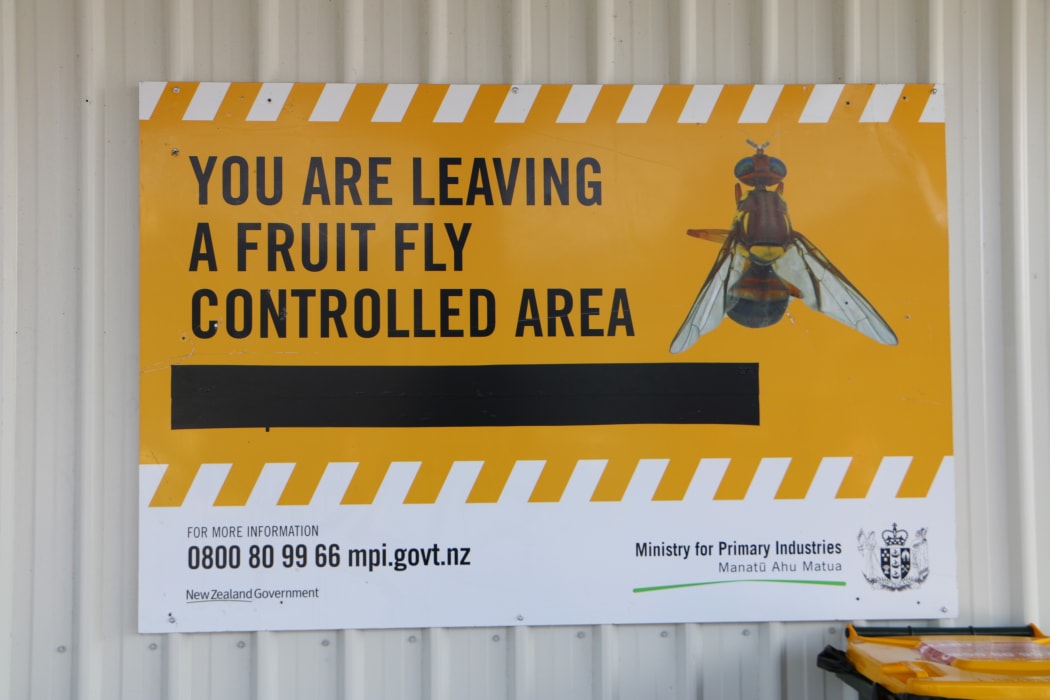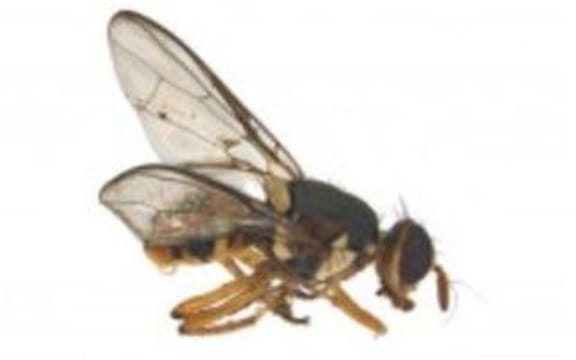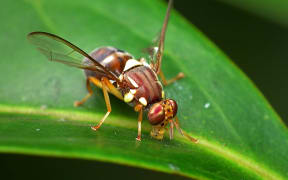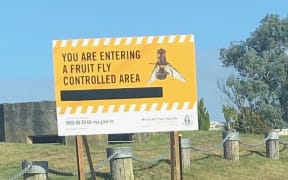Two more foreign fruit flies have been located in Auckland suburbs where produce movement restrictions will continue.

Photo: RNZ / Jessie Chiang
A fourth male Queensland fruit fly has been found in Northcote, bringing the total number of the unwanted import found on Auckland's North Shore to five.
And another facialis fruit fly has been found in Ōtara.
Ministry for Primary Industries said produce restrictions in Northcote will remain the same but more restrictions will come into effect in Ōtara.
The Ōtara find is 630m to the north of the last one inside the current Zone B. Another Zone A will be established in Ōtara, which will mean restrictions on a different area. The current Zone B is unchanged.
Find out more about the fruit flies and the risks they pose and see detailed maps of the controlled areas
Biosecurity spokesperson Catherine Duthie said 300kg of fruit collected from A Zones on the North Shore and 500kg collected from Ōtara has been cut and examined by Biosecurity.
"We have yet to find any fruit fly larvae," she said.
Dr Duthie said this was a good indication there was no established breeding population.
She said if there was reason to believe there was an incursion, specific female-targeted traps would be used.
"We are going to continue to monitor the traps very closely and do more fruit dissection to really cover all bases to make sure we don't have a breeding population out there," Dr Duthie said.
"We are not ramping up our activities but we will be extending them for a further time," she said.
"Our extensive surveillance programme is continuing including trapping, visual inspection of backyard gardens and fruit trees, and collection and laboratory examination of fallen fruit," Dr Duthie said.

The facialis fruit fly Photo: MPI
Fruit Fly Council chairperson Stu Hutchings said despite the additional finds, there was no evidence of a breeding population.
"That is good news that can give us continued confidence in our biosecurity system, as well as the response actions taken so far," he said.
"All the flies have been found in traps, which are very sensitive and an internationally proven method of surveillance," Mr Hutchings said.
"If there is a breeding population present, there is a high likelihood of finding it as the response continues over the coming days."
He said if more fruit flies are found, the response would escalate and stricter controls would come into effect.
Mr Hutchings said the current control notices on affected areas would only be lifted once 14 days had passed since the last fruit fly discovery, and ongoing trappings would continue to provide surety.
Dr Duthie said no more Queensland fruit flies have been found in Devonport since the only find there on 14 February.
She said the response team would reconsider next week whether movement controls needed to continue in Devonport.
Dr Duthie said MPI was working closely with horticulture industry partners and expected this to have little, if any, practical impact on fruit exports.
Timeline from Biosecurity NZ: Fruit flies found in Auckland in 2019
- 14 February - Single male Queensland fruit fly located in Devonport, on the North Shore.
- 18 February - A different type of fruit fly, a male facialis, discovered in Ōtara, south Auckland.
- 20 February - Another single male Queensland fruit fly found on the North Shore, this time in Northcote.
- 21 February - A second single male facialis detected in Ōtara, only 70 metres from the first find.
- 25 February - Another single Queensland fruit fly found in Northcote.
- February 28 - A third single male Queensland fruit fly detected in Northcote, 270 metres from where the last was found.
- 4 March - A fourth male Queensland fruit fly detected in Northcote, approximately 80 metres from where the last was found.
- 5 March - A third single male facialis detected in Ōtara, 630 metres to the North of the last find




